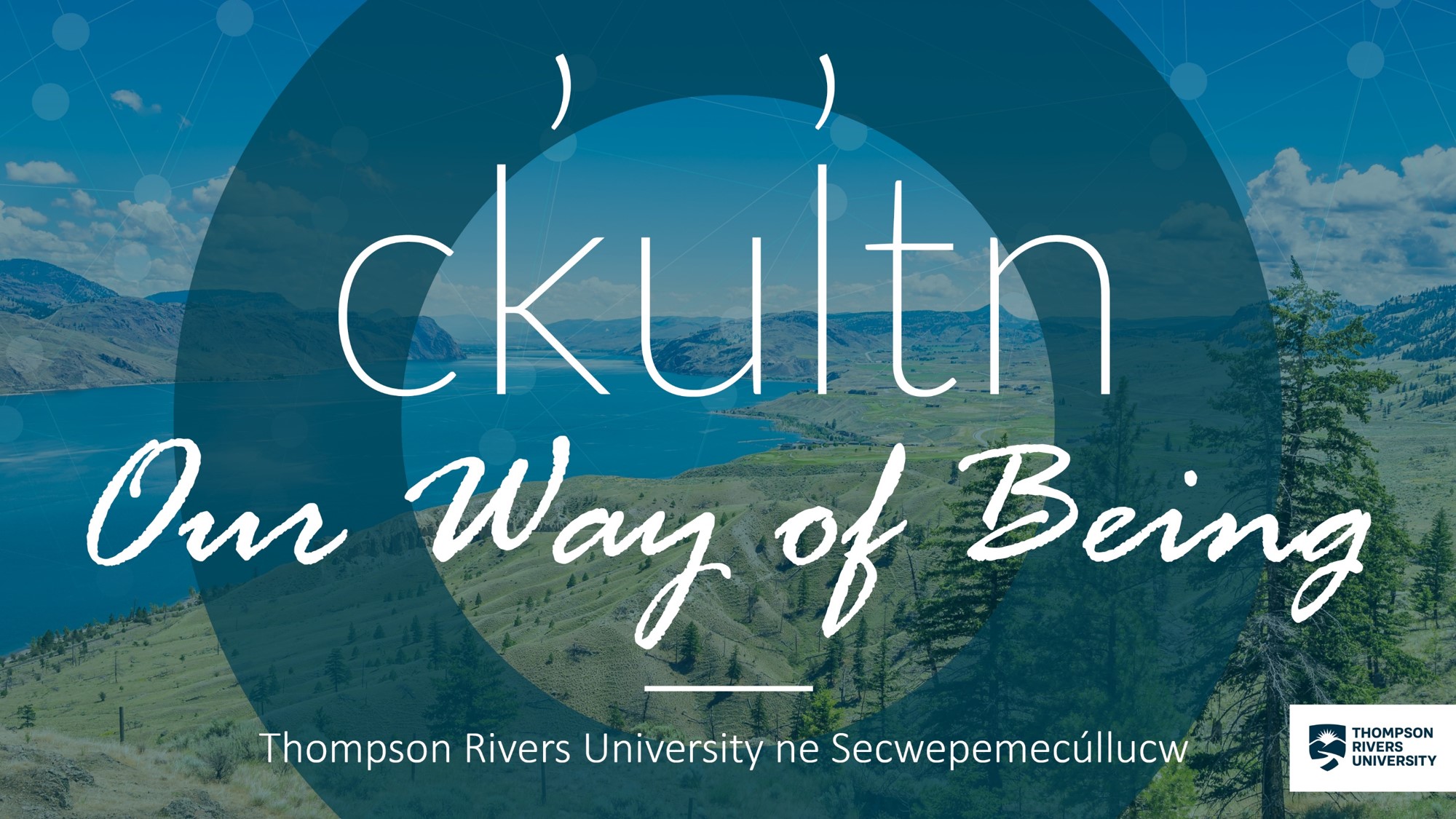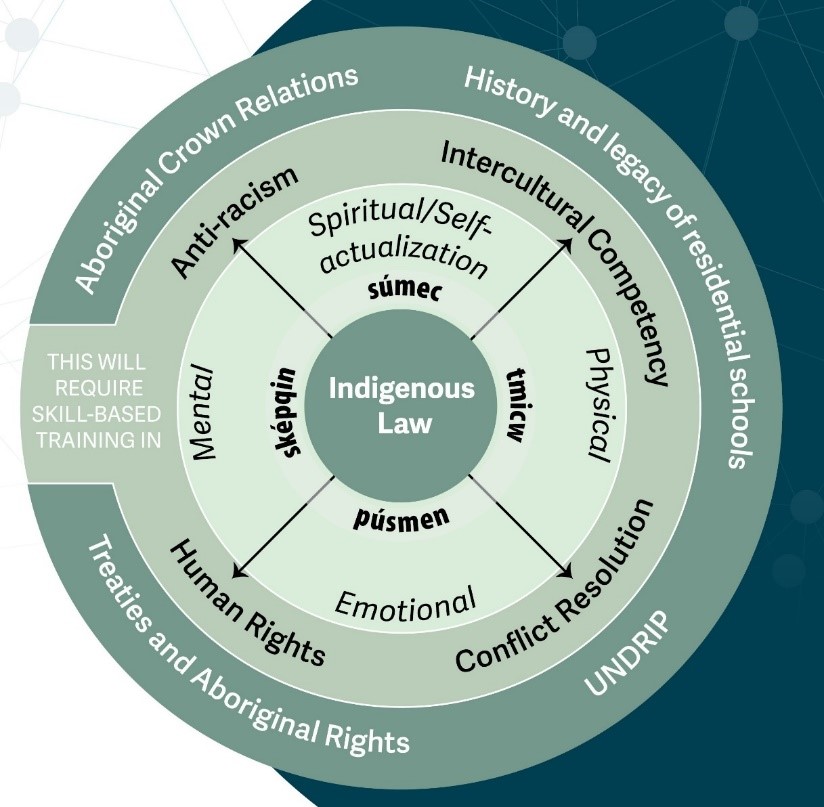1 Cḱuĺtn – Secwepémc Way of Being

This learning resource has been created in line with the implementation of the Truth and Reconciliation Commission (TRC) Calls to Action. It focuses on Call to Action #28, which is specific to law schools, from a holistic perspective, where indigenous laws, knowledge, and teachings play a central role.
This learning resource is structured around Cḱuĺtn, a Secwepémc Way of Being. It is comprised of four elements: the physical element to the land, tmícw; the mental element to the head, sképqin; the emotional element to the heart, púsmen; and the spiritual element to your spirit, your súmec. Sometimes referred to as a medicine wheel, this is an important way of being and philosophy for many Indigenous Peoples. The depth of it goes beyond the focus of what we can cover in our learning in law school, it encompasses an indigenous way of life and looking at things. However, it is important to have a basic understanding of what it is and how it often informs Indigenous values and beliefs. It is a circle that is broken into four quadrants, equal in size and importance. According to the teachings, it is important to balance all four elements: at the centre of the circle there is a smaller circle which represents going inside oneself to achieve that balance.

The quadrants represent the physical, emotional, mental, and spiritual/self-actualization elements of living a balanced lifestyle. Each of the following elements element will be explored based on Secwepemc teachings: tmícw (land) as the physical, púsmen (heart) as the emotional, sképqin (head) as the mental, and súmec (soul) as the spiritual/self-actualization elements. In the centre or the intersection of the quadrants is the individual and taking the teachings inwards. To live a balanced lifestyle, one must understand that each quadrant is equally important and they all have to be balanced. For example, if we become enamoured with the emotional element, we become unbalanced.
These teachings have provided guidance in structuring the learning experience into physical, emotional, mental and spiritual or self-actualization elements which also inform the ongoing curriculum development. In turn we have been aligning our learning objectives with these elements of the medicine wheel and ensure a more holistic and experiential learning experience. These indigenous teachings also relate to a teaching model that has been used by many Indigenous Peoples and has proven helpful in our curriculum development.[1]
We relate this to all the core substantive elements of the call to action, with Indigenous laws being a central one; along with the history and legacy of residential schools; the United Nations Declaration on the Rights of Indigenous Peoples (UNDRIP); Treaties and Aboriginal rights; and Aboriginal–Crown relations. This also relates well to the more applied skill-based training in intercultural competency; conflict resolution; human rights; and antiracism, as all depicted in the enclosed graphic in a more circular and inter-related manner. These skills require practice, which has to continue through our work in the programme and the legal profession.

The following chapters focus on the history and legacy of residential schools breaking it down into the four elements of cḱuĺtn, the physical, the emotional, the mental and the spiritual/self-actualization element. We are grateful to the Indigenous teachers who have shared their wisdom with us and we are sharing this with you to help you cope with and process everything that you will learn, especially the testimony of residential school, sixties scoop and day scholar survivors. The respective teachings are that all these elements have to be balanced, rather than just focusing on one, like we tend to do with the mental element in law school. At the centre of the teaching is to go inside yourself and integrate what you have learned, so you can carry the teachings in a balanced manner.
- Marcella LaFever, “Switching from Bloom to the Medicine Wheel: Creating Learning Outcomes That Support Indigenous Ways of Knowing in Post-Secondary Education” (2016) 27:5 Intercultural Education 409. ↵
